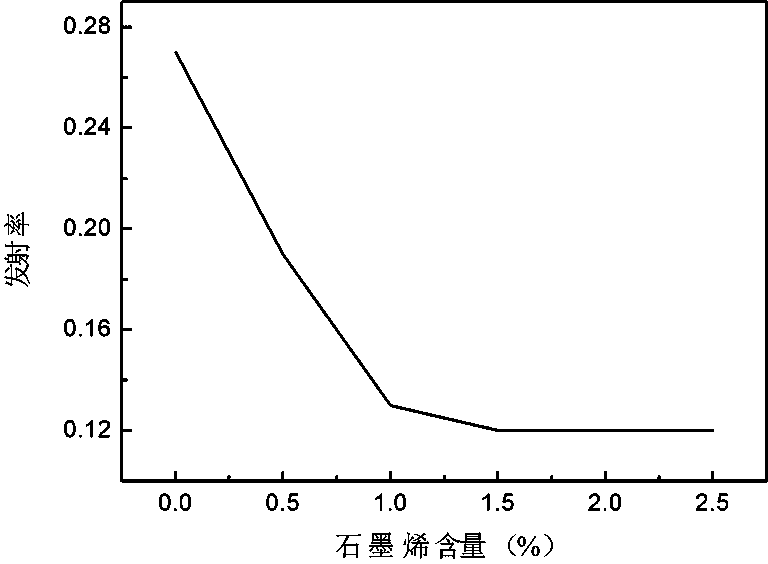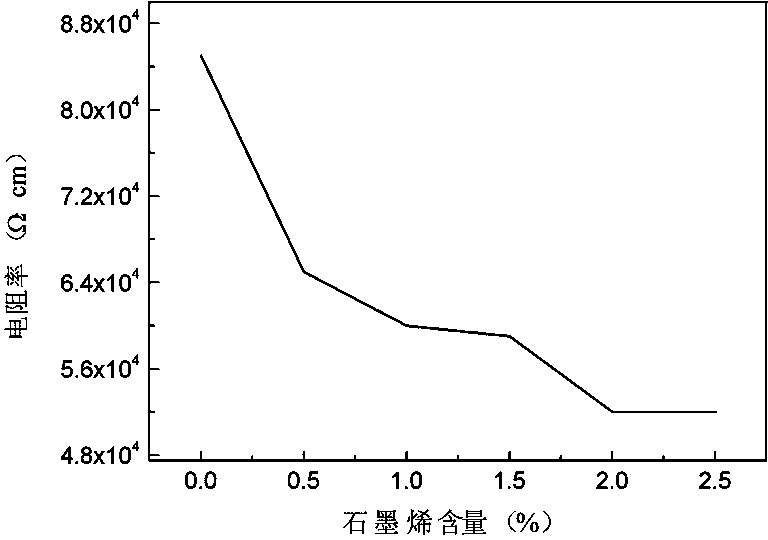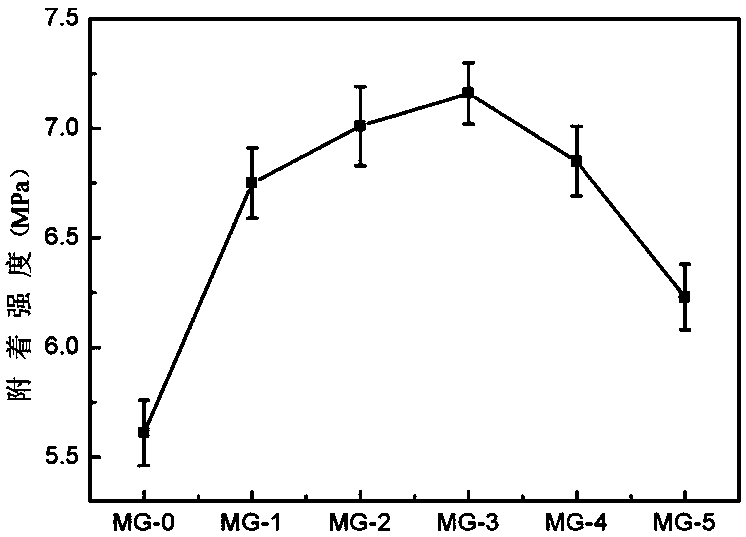Graphene-containing infrared low-emissivity coating
A low-emissivity, graphene technology, applied in conductive coatings, camouflage coatings, coatings, etc., can solve the problems of poor continuity of metal pigments, and achieve the effect of reducing emissivity, reducing dosage, and good infrared stealth performance.
- Summary
- Abstract
- Description
- Claims
- Application Information
AI Technical Summary
Problems solved by technology
Method used
Image
Examples
Embodiment 1
[0042] According to the above method, 34g flake floating aluminum powder, 0.5g modified graphene, 50g hydroxyl acrylic resin, 1.2g titanium dioxide, 2.5ml butyl acetate, 0.5g thixotropic agent, 0.6g defoamer, 0.5g disperse solvent, 7ml xylene and 7ml cyclohexanone to make a coating.
Embodiment 2
[0044] According to the above method, 33g flake floating aluminum powder, 1g modified graphene, 50g hydroxyacrylic resin, 1.2g titanium dioxide, 2.5ml butyl acetate, 0.5g thixotropic agent, 0.6g defoamer, 0.5g dispersant , 7ml xylene and 7ml cyclohexanone to make a coating.
Embodiment 3
[0046] According to the above method, 32g flake floating aluminum powder, 1.5g modified graphene, 50g hydroxy acrylic resin, 1.2g titanium dioxide, 2.5ml butyl acetate, 0.5g thixotropic agent, 0.6g defoamer, 0.5g disperse solvent, 7ml xylene and 7ml cyclohexanone to make a coating.
[0047] Add an aliphatic isocyanate curing agent to the coating prepared in Examples 1-3, disperse and mix evenly at a high speed, spray it on a clean tinplate with a spray gun, and place it in an oven for 60 Dry at ~80°C for 6 hours to form a coating. After the blackbody temperature of the infrared emissivity tester is stabilized at 80 °C, install an 8-14 μm filter, and after instrument calibration, measure the infrared emissivity of the coating in the range of 8-14 μm.
[0048] The properties of coatings measured by national standards are shown in the table below:
[0049]
[0050] The addition of floating aluminum powder is selected as 35% of the coating weight, and the addition of modified...
PUM
| Property | Measurement | Unit |
|---|---|---|
| emissivity | aaaaa | aaaaa |
| emissivity | aaaaa | aaaaa |
| emissivity | aaaaa | aaaaa |
Abstract
Description
Claims
Application Information
 Login to View More
Login to View More - R&D
- Intellectual Property
- Life Sciences
- Materials
- Tech Scout
- Unparalleled Data Quality
- Higher Quality Content
- 60% Fewer Hallucinations
Browse by: Latest US Patents, China's latest patents, Technical Efficacy Thesaurus, Application Domain, Technology Topic, Popular Technical Reports.
© 2025 PatSnap. All rights reserved.Legal|Privacy policy|Modern Slavery Act Transparency Statement|Sitemap|About US| Contact US: help@patsnap.com



